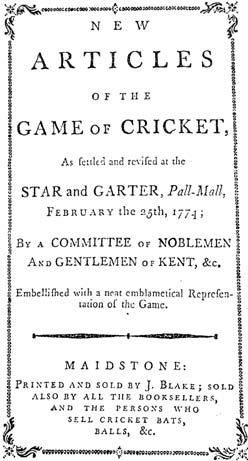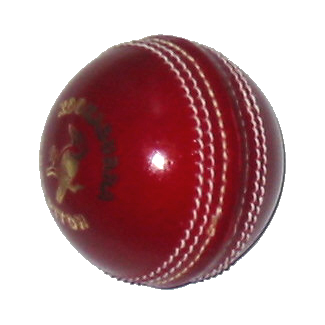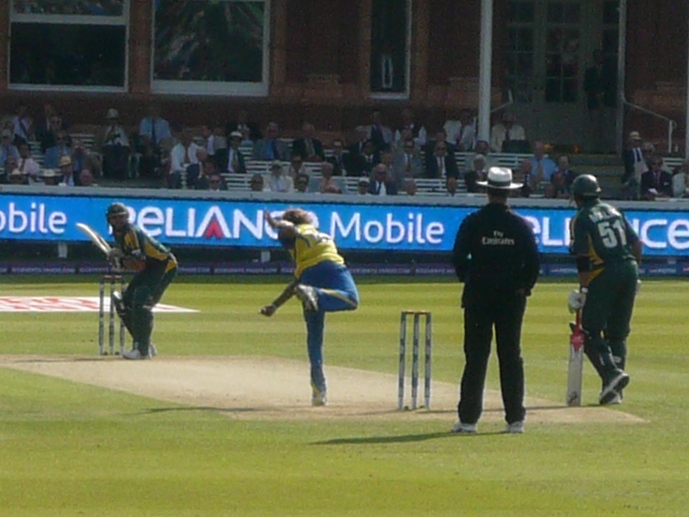|
Stumped
Stumped is a method of dismissing a batsman in cricket, which involves the wicket-keeper putting down the wicket while the batsman is out of his ground. (The batsman leaves his ground when he has moved down the pitch beyond the popping crease, usually in an attempt to hit the ball). The action of stumping can only be performed by a wicket-keeper, and can only occur from a legitimate delivery (i.e. not a no-ball), while the batsman is not attempting a run; it is a special case of a run out. Being "out of his ground" is defined as not having any part of the batsman's body or his bat touching the ground behind the crease – i.e., if his bat is slightly elevated from the floor despite being behind the crease, or if his foot is on the crease line itself but not completely across it and touching the ground behind it, then he would be considered out (if stumped). One of the fielding team (such as the wicket-keeper himself) must appeal for the wicket by asking the umpire. The appe ... [...More Info...] [...Related Items...] OR: [Wikipedia] [Google] [Baidu] |
Dismissal (cricket)
In cricket, a dismissal occurs when a batter's innings is brought to an end by the opposing team. Other terms used are the batsman being out, the batting side losing a wicket, and the fielding side taking a wicket. The ball becomes dead (so no further runs can be scored off that delivery), and the dismissed batter must leave the field of play for the rest of their team's innings, to be replaced by a team-mate. A team's innings ends if ten of the eleven team members are dismissed. Players bat in pairs so, when only one batter is not out, it is not possible for the team to bat any longer. This is known as ''dismissing'' or ''bowling out'' the batting team, who are said to be '' all out''. The most common methods of dismissing a batter are (in descending order of frequency): caught, bowled, leg before wicket, run out, and stumped. Of these, the leg before wicket and stumped methods of dismissal can be seen as related to, or being special cases of, the bowled and run out m ... [...More Info...] [...Related Items...] OR: [Wikipedia] [Google] [Baidu] |
Wicket-keeper
The wicket-keeper in the sport of cricket is the player on the fielding side who stands behind the wicket or stumps being watchful of the batsman and ready to take a catch, stump the batsman out and run out a batsman when occasion arises. The wicket-keeper is the only member of the fielding side permitted to wear gloves and external leg guards. The role of the keeper is governed by Law 27 of the Laws of Cricket. Stance Initially, during the bowling of the ball the wicket-keeper crouches in a full squatting position but partly stands up as the ball is received. Australian wicket-keeper Sammy Carter (1878 to 1948) was the first to squat on his haunches rather than bend over from the waist (stooping). Purposes The keeper's major function is to stop deliveries that pass the batsman (in order to prevent runs being scored as 'byes'), but he can also attempt to dismiss the batsman in various ways: * The most common dismissal effected by the keeper is for him to ''catch' ... [...More Info...] [...Related Items...] OR: [Wikipedia] [Google] [Baidu] |
Laws Of Cricket
The ''Laws of Cricket'' is a code which specifies the rules of the game of cricket worldwide. The earliest known code was drafted in 1744 and, since 1788, it has been owned and maintained by its custodian, the Marylebone Cricket Club (MCC) in London. There are currently 42 Laws (always written with a capital "L") which outline all aspects of how the game is to be played. MCC has re-coded the Laws six times, the seventh and latest code being released in October 2017. The 2nd edition of the 2017 Code came into force on 1 April 2019. The first six codes prior to 2017 were all subject to interim revisions and so exist in more than one version. MCC is a private club which was formerly cricket's official governing body, a role now fulfilled by the International Cricket Council (ICC). MCC retains copyright in the Laws and only the MCC may change the Laws, although usually this is only done after close consultation with the ICC and other interested parties such as the Association of Crick ... [...More Info...] [...Related Items...] OR: [Wikipedia] [Google] [Baidu] |
Laws Of Cricket
The ''Laws of Cricket'' is a code which specifies the rules of the game of cricket worldwide. The earliest known code was drafted in 1744 and, since 1788, it has been owned and maintained by its custodian, the Marylebone Cricket Club (MCC) in London. There are currently 42 Laws (always written with a capital "L") which outline all aspects of how the game is to be played. MCC has re-coded the Laws six times, the seventh and latest code being released in October 2017. The 2nd edition of the 2017 Code came into force on 1 April 2019. The first six codes prior to 2017 were all subject to interim revisions and so exist in more than one version. MCC is a private club which was formerly cricket's official governing body, a role now fulfilled by the International Cricket Council (ICC). MCC retains copyright in the Laws and only the MCC may change the Laws, although usually this is only done after close consultation with the ICC and other interested parties such as the Association of Crick ... [...More Info...] [...Related Items...] OR: [Wikipedia] [Google] [Baidu] |
Cricket Laws And Regulations
Cricket is a bat-and-ball game played between two teams of eleven players on a field at the centre of which is a pitch with a wicket at each end, each comprising two bails balanced on three stumps. The batting side scores runs by striking the ball bowled at one of the wickets with the bat and then running between the wickets, while the bowling and fielding side tries to prevent this (by preventing the ball from leaving the field, and getting the ball to either wicket) and dismiss each batter (so they are "out"). Means of dismissal include being bowled, when the ball hits the stumps and dislodges the bails, and by the fielding side either catching the ball after it is hit by the bat, but before it hits the ground, or hitting a wicket with the ball before a batter can cross the crease in front of the wicket. When ten batters have been dismissed, the innings ends and the teams swap roles. The game is adjudicated by two umpires, aided by a third umpire and match referee ... [...More Info...] [...Related Items...] OR: [Wikipedia] [Google] [Baidu] |
Cricket
Cricket is a bat-and-ball game played between two teams of eleven players on a field at the centre of which is a pitch with a wicket at each end, each comprising two bails balanced on three stumps. The batting side scores runs by striking the ball bowled at one of the wickets with the bat and then running between the wickets, while the bowling and fielding side tries to prevent this (by preventing the ball from leaving the field, and getting the ball to either wicket) and dismiss each batter (so they are "out"). Means of dismissal include being bowled, when the ball hits the stumps and dislodges the bails, and by the fielding side either catching the ball after it is hit by the bat, but before it hits the ground, or hitting a wicket with the ball before a batter can cross the crease in front of the wicket. When ten batters have been dismissed, the innings ends and the teams swap roles. The game is adjudicated by two umpires, aided by a third umpire and matc ... [...More Info...] [...Related Items...] OR: [Wikipedia] [Google] [Baidu] |
Twenty20
Twenty20 (T20) is a shortened game format of cricket. At the professional level, it was introduced by the England and Wales Cricket Board (ECB) in 2003 for the inter-county competition. In a Twenty20 game, the two teams have a single innings each, which is restricted to a maximum of 20 overs. Together with first-class and List A cricket, Twenty20 is one of the three current forms of cricket recognised by the International Cricket Council (ICC) as being at the highest international or domestic level. A typical Twenty20 game is completed in about two and a half hours, with each innings lasting around 70 minutes and an official 10-minute break between the innings. This is much shorter than previous forms of the game, and is closer to the timespan of other popular team sports. It was introduced to create a fast-paced game that would be attractive to spectators at the ground and viewers on television. The game has succeeded in spreading around the cricket world. On most in ... [...More Info...] [...Related Items...] OR: [Wikipedia] [Google] [Baidu] |
MS Dhoni
Mahendra Singh Dhoni (; born 7 July 1981) is an Indian former international cricketer who was captain of the Indian national cricket team in limited-overs formats from 2007 to 2017 and in Test cricket from 2008 to 2014. He is also the current captain of CSK in the IPL. He led India to victory in three ICC trophies 2007 ICC World Twenty20, 2011 Cricket World Cup and 2013 ICC Champions Trophy, the most by any Indian captain. Under his captaincy India also won 2010 and 2016 Asia Cup. Also under his leadership India won 2010 and 2011 ICC Test Mace and 2013 ICC ODI Championship. A right-handed wicket-keeper batsman. He scored over 10,000 runs in One Day Internationals, with the reputation as one of the best finishers in the game. He is also one of the greatest wicket-keepers in the history of cricket. In Indian domestic cricket he played for Bihar and Jharkhand Cricket team. He is the captain of Chennai Super Kings (CSK) in the Indian Premier League. He captained t ... [...More Info...] [...Related Items...] OR: [Wikipedia] [Google] [Baidu] |
Bert Oldfield
William Albert Stanley Oldfield (9 September 1894 – 10 August 1976) was an Australian cricketer and businessman. He played for New South Wales and Australia as a wicket-keeper. Oldfield's 52 stumpings during his Test career remains a record several decades after his final Test. Life and career Oldfield was born in Alexandria, a suburb of Sydney, New South Wales, the seventh child of John William Oldfield, an upholster born in Manchester and his Australian wife Mary Gregory. During World War I, Oldfield served with the first Australian Imperial Force as a Corporal in the 15th Field Ambulance. He was wounded and knocked unconscious at Ypres Salient in 1917, and spent six months recovering from shell shock.''The Oxford Companion to Australian Cricket'', Oxford, Melbourne, 1996, p. 401. At the conclusion of the war he was selected to be part of the Australian Imperial Forces cricket team which played 28 first-class matches in Britain, South Africa and Australia between May 191 ... [...More Info...] [...Related Items...] OR: [Wikipedia] [Google] [Baidu] |
No Ball
In cricket, a no-ball is a type of illegal delivery to a batter (the other type being a wide). It is also a type of extra, being the run awarded to the batting team as a consequence of the illegal delivery. For most cricket games, especially amateur, the definition of all forms of no-ball is from the MCC ''Laws of Cricket.'' The delivery of a no-ball results in one run – two under some regulations – to be added to the batting team's overall score, and an additional ball must be bowled. In addition, the number of ways in which the batter can be given out is reduced to three. In shorter competition cricket, a batter receives a free hit on the ball after any kind of no-ball (see below); this means the batter can freely hit that one ball with no danger of being out in most ways. No-balls due to overstepping the crease are common, especially in short form cricket, and fast bowlers tend to bowl them more often than spin bowlers. It is also a no-ball when the bowler's back foot ... [...More Info...] [...Related Items...] OR: [Wikipedia] [Google] [Baidu] |
Wide (cricket)
In cricket, a wide is a type of illegal delivery to a batter (the other type being a no-ball) that is judged by the umpire to be too wide or (in international cricket) too high to be hit by the batsman by means of a normal cricket shot. It is also a type of extra, being the run awarded to the batting team as a consequence of such an illegal delivery. Definition Wide balls are covered by Law 22 of the Laws of Cricket. A delivery is a wide if it is not sufficiently within reach for the batter to be able to hit it with the bat by means of a normal cricket stroke from where the batter is standing, and also would not have been sufficiently within reach for the batter to be able to hit it with the bat by means of a normal cricket stroke if the batter were standing in a normal guard position. Therefore a delivery is not a wide if the ball hits the bat or batsman, or if the batsman, by moving, causes the ball to be out of reach. Also, if a ball qualifies as a no-ball as well as a w ... [...More Info...] [...Related Items...] OR: [Wikipedia] [Google] [Baidu] |
Crease (cricket)
In the sport of cricket, the crease is a certain area demarcated by white lines painted or chalked on the field of play, and pursuant to the rules of cricket they help determine legal play in different ways for the fielding and batting side. They define the area within which the batsmen and bowlers operate. The term ''crease'' may refer to any of the lines themselves, particularly the popping crease, or to the region that they demark. Law 7 of the Laws of Cricket governs the size and position of the crease markings, and defines the actual line as the back edge of the width of the marked line on the soil, i.e., the edge nearest to the wicket at that end. Four creases (one popping crease, one bowling crease, and two return creases) are drawn at each end of the pitch, around the two sets of stumps. The bowling creases lie 22 yards (66 feet or 20.12 m) apart, and mark the ends of the pitch. For the fielding side, the crease defines whether there is a no-ball because the wicket-kee ... [...More Info...] [...Related Items...] OR: [Wikipedia] [Google] [Baidu] |

.jpg)







